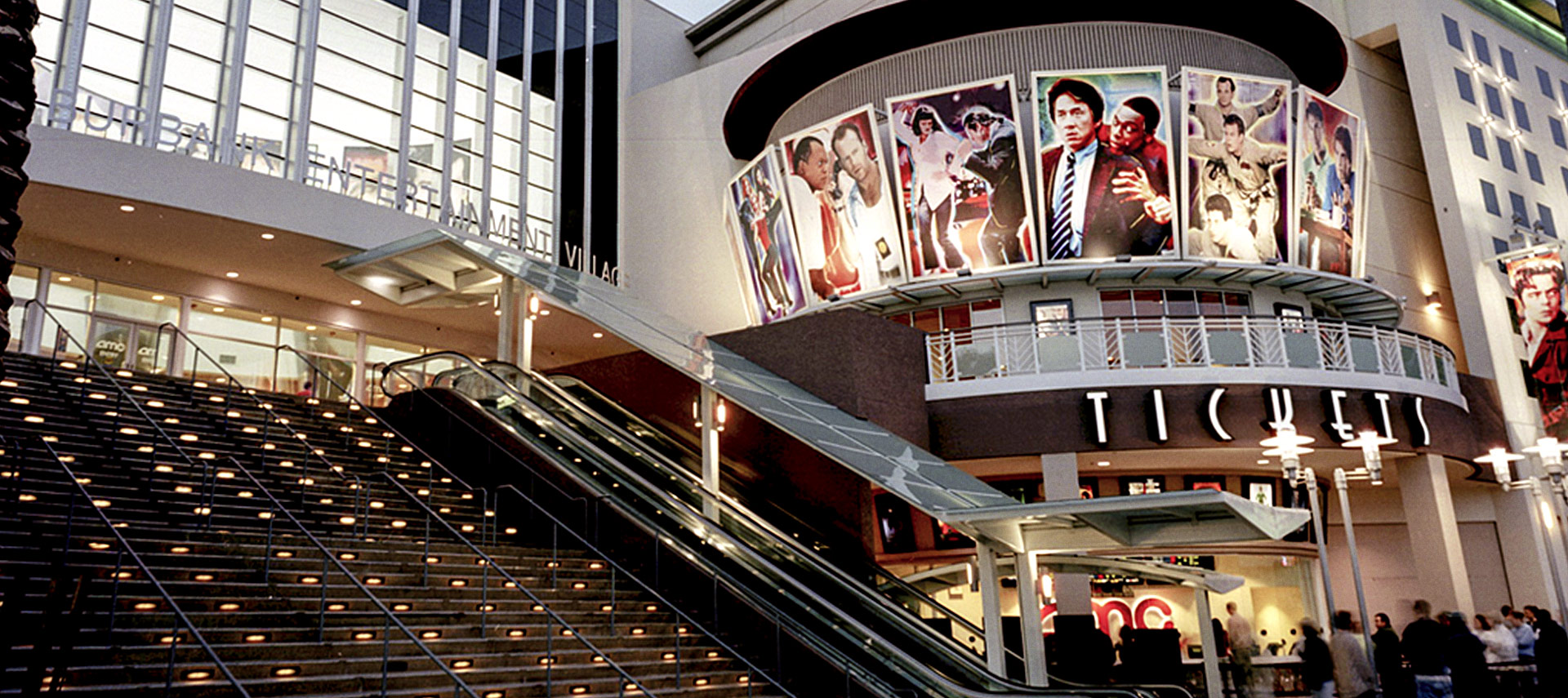Entertainment Districts are entertainment venue-anchored retail properties that offer dining, shopping, live entertainment and music, as well as ice skating, fitness facilities, and other attractions that answer the needs of dynamic new customer bases as well as tried-and-true consumers.
Both destination locations and community mainstays, Entertainment Districts are inherently adaptable property types, and therefore uniquely positioned to serve an emerging experience economy. And despite the advent of at-home internet access, brick-and-mortar continues to draw a shopping majority by offering a more comprehensive approach to the retail experience.
In this list we’ll take a brief look at five of the ways Entertainment Districts generate repeat visits, starting with the importance of variety in today’s marketplace.

The property types that anchor Entertainment Districts, usually entertainment venues and/or movie theatres, are unique in their ability to offer something new at any given time.
Entertainment Districts must be able to keep pace with constantly evolving consumer tastes, as well as reflect new generations of shoppers. With the ability to host a revolving door of acts, Entertainment Districts are designed to appeal to diverse fan bases and demographics.
As the experience economy strengthens, so does the draw of live entertainment. According to research from IBIS World, the concert and event industry drives $25B in revenue each year. This could in part be attributed to Millennials’ well-documented penchant for experience-based spending: this holiday, 52% of their spending will go toward experience-related purchases, including entertainment.
Events can also be programmed to draw a target audience tenants and operators are hoping to reach. For example, a musical act popular with a teenage demographic on the main stage could mean benefits for store owners that are aiming to reach that spending group.


From 1992 to 2015, American spending at restaurants and bars increased from $17B to over $51B. Not surprisingly, food and beverage establishments have even emerged as effective anchors in Entertainment Districts, as consumers place increasing value on the experience of dining out.

“From grocery stores to farmer’s markets to coffee shops to sit down and fast casual restaurants, some element of food is necessary for a successful retail environment today,” according to Randall Shearin of Shopping Centers Today.
Further, restaurants in retail centers increase foot traffic, dwell time, cross-shopping (such as attending a movie), and spend per person, according to Urban Land Magazine.
The Wall Street Journal reported new research this month that households did not use the savings from cheaper gasoline this year to save money, as previously believed, but were in fact quick to spend. Based on an examination of the spending patterns of millions of consumers, it was revealed that “individuals spent 78 cents of every dollar saved on gasoline, with about 18% of that going to eating out.”

Open-air centers and public spaces in the retail sector have shifted from aesthetic, architectural touches to valuable assets.

Outdoor dining areas, parklets, and gathering areas are a stark change from the retail developments of the 1980s and 90s, which were focused on convenience and in-and-out shopping. Today, outdoor spaces deliver a great deal of value in terms of driving traffic and increasing length of stay per visit.
Shoppers today seek fluid, flexible spaces with landscape elements that invite relaxation and socializing. Perks like complementary wi-fi and play areas for children promote lingering rather than hurrying to and from a single destination.
Urban street scapes create the feel of the big city with innovative lighting and storefront variety, making for a new a “day on the town” that comes with all the modern amenities.

Instead of 14-day lavish excursions, consumers today are embracing shorter, less expensive options that can provide similar R&R.
According to research from IBIS World, events provide “an affordable luxury compared with vacations, and due to Americans’ persistent demand for live entertainment, this industry is expected to thrive as consumers’ disposable incomes continue to grow.”

Changes in leisure spending, the increase in two-income families, and an increased focus on academic performance of children have posed challenges to scheduling extended vacations.
With multi-cinema theaters, bars, restaurants, arcades, gyms and live music, the multitude of experiences that an Entertainment District offers can provide some of the adventure of travel while staying close to home, as Entertainment Districts are designed to be accessible whether you’re in a nearby suburb, a neighboring state, or blocks away from the heart of the city.

Consumers today value their time. Both Millennials and Baby Boomers agree that if they take the time to venture out of their homes to a brick-and-mortar location, it should be an experience worth their while and meet many of their needs at once.

According to PricewaterhouseCoopers, Millennials currently have an estimated purchasing power of $2.5 trillion. By 2018, Millennials will match the $3.0 trillion spending power of the baby boom generation.
This is good news for Entertainment Districts, as research has made clear that both of these generations place a high value on socialization opportunities, such as group dining experiences. This desire for communal space is reflected in the mixed-use developments that offer consumers shopping combined with entertainment or other attractions.
The recent rise of baby boomers choosing apartment living in urban areas over suburban downsizing is another example of the ways these two demographics are thinking alike–and influencing real estate.
With the development of entertainment retail centers that are combined with residential real estate, Entertainment Districts will have an expanded new customer base living practically next door.
Sources
Dolce, Natalie. (2015, August 13). From Shopping Centers to ‘Entertainment Dining Centers.’ GlobeSt.com Retrieved from http://www.globest.com/news/12_1174/national/gs15/From-Shopping-Centers-to-Entertainment-Dining-Centers-360708-1.html
Nielsen. (2015, September 2). Hungry for Opportunity? The Best Spots for Restaurant Growth in 2015. Retrieved from http://www.nielsen.com/us/en/insights/news/2015/hungry-for-opportunity-the-best-spots-for-restaurant-growth-in-2015.html
Shearin, Randall. (2015, March 6). Creating the Experience. Shopping Center Business. Retrieved from https://www.shoppingcenterbusiness.com/from-the-magazine/creating-the-experience
Shipley, Nellie K. and Core, Sarah. (2015, August). The Multigenerational Impact on CRE: Dealing with a Barbell Makes the Heavy Lifting Easier. https://www.crewnetwork.org/multigenerational-impact-on-CRE.aspx
Sparshott, Jeffrey. (2015, October 8.). U.S. Consumers Splurged with Gas Savings After All, Study Finds. Wall Street Journal. Retrieved from http://blogs.wsj.com/economics/2015/10/08/u-s-consumers-splurged-with-gas-savings-after-all-study-finds






